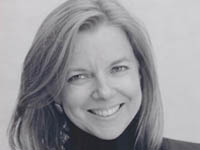There is an often-told story among women leaders about a common experience they have had in meetings where men significantly outnumber women. Maybe you have heard it. It goes like this: the team or committee is grappling with a problem and everyone is chiming in, offering different approaches and solutions. One of the two or three women present tosses out an idea, but the conversation continues. A few minutes later, one of the men repeats her idea and the group seizes on it as the way to go.
What causes the team to hear him, but not her? Did his deeper voice command reflexive respect? Was he a larger presence, physically or emotionally, or both? Did he speak with more authority?
It’s impossible to know exactly. Yet, it seems clear that a woman with a good idea was treated as “lesser than” the guy who subsequently succeeds with her idea. It also seems to be true that the whole group, women and men alike, discount her.
How is that dynamic, recounted by so many women, at work in elections? How often do voters, consultants and reporters unknowingly perceive a woman as “lesser than” her opponent and draw conclusions with little or no awareness of the mental slight or its root? And when that slight is the result of traditions or systems with which we have grown up — ones that didn’t originally contemplate women’s participation — we should take a critical look at them and their influence on our decision-making.
Consider the language of elections. Can a woman candidate be perceived as a peer to her male opponent when the lexicon of the contest is evocative of war? An electoral contest is a “campaign” waged by “lieutenants” who work in a “war room” trying to avoid “bunker mentality.” Those “lieutenants” develop “attack ads” and engage in “field operations” and, if things get really tough, bring in the “big guns.”
For Boomers and older voters, this militaristic language likely evokes a mental image that is exclusively male. Gen Xers and Millennials may not share that single-sex view of the military, but it is difficult to imagine that such language doesn’t disadvantage female candidates among younger voters too. Moreover, is it possible that this language works to subtly discourage women from running? Does this language convey to prospective female candidates that they are “lesser than…?”
And what about the standard hurdles all candidates must clear – like debates? Are male and female candidates starting as equals in our minds? Imagine a debate stage with two podiums facing the moderator’s desk. Those podiums are generally built for 6-foot tall men. Even when adjusted for height, podium width and depth can emphasize the smaller stature of a candidate, usually the woman. Even when debates are conducted with all candidates seated behind a table, more common today, traditional expectations can still evoke questions that discount a woman candidate’s performance. How does she sound? Does she offer the conversational ease of a Bill Clinton or the paternal comfort of a Roosevelt fireside chat? Does she respond decisively when challenged? Or do we even notice, because instead we’re distracted by her dress and hair?
Thoughtful men and women readily recognize that neither smaller size nor higher pitch is relevant when assessing a candidate’s qualifications. Yet, research suggests that characteristics like these can still make it harder for some voters to accept a woman as a credible candidate.
As more women run and win high office, these perceptions will change. And that change is needed. American women have never held more than 25% of federal or state elective offices. In fact, for the past 15 years the rate of progress for electing women to office has stalled. Understanding the complex judgments each of us makes as we choose our leaders is important. This is particularly important now, when the enormous challenges our nation faces demand that we draw the best from 100% of our talent pool.
In the 2016 elections we will have an opportunity to discuss our biases, examine language that diminishes candidacies and question traditions that may disadvantage contenders. Let’s do it. We owe it to all those smart, thoughtful women who never got credit for advancing their great idea in a meeting and who consequently never enjoyed the satisfaction of earning their way into the Board room, the C Suite or the Oval office.

Mary V. Hughes is a founder of close the gap CA and co-founder and President of Hughes & Company, previously Staton Hughes, a strategic communications and political consulting firm in Palo Alto, California. Hughes also founded and served as Director of The 2012 Project, a national, non-partisan campaign of the Center for American Women and Politics at Rutgers University to increase the number of women in Congress and state legislatures by taking advantage of newly drawn and newly created districts resulting from redistricting and reapportionment. Hughes has advised candidates for President, Congress, state and legislative offices and formerly served as Executive Director of the California Democratic Party. She is an Emerge CA “Woman of the Year” (2007) and a Women’s eNews Leader for the 21st Century (2012). Mary is a graduate of the University of Virginia School of Law and Mt. Holyoke College. She lives with her husband in Palo Alto.


 In April 2015, the
In April 2015, the 